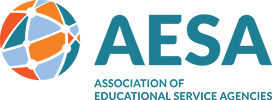Survey Results
With one year remaining to spend close to $200 billion in federal COVID relief funds, more than half of school district leaders are shifting their American Rescue Plan spending decisions due to higher-than-expected costs and inflation, according to a survey administered by AASA, The School Superintendents Association. Educator feedback and the need to further direct resources toward the social and emotional needs of students were cited by nearly half of district leaders as the source for realigning spending priorities and decisions.
The School District Spending of American Rescue Plan report is the fourth installment of a multi-year survey focused on how school systems across the country are utilizing ARP funds in response to the COVID-19 pandemic.
The report also sought information about what districts are prioritizing in spending ARP funding and how they are considering the sustainability of the funding in their decision-making. Eighty-six percent of district leaders said sustainability was a top priority or they strongly considered sustainability when determining ARP expenditures.
A third of superintendents responding believe that all students will be impacted equally in their communities by the discontinuation of ARP-funded instructional programs and supports in the 2024-2025 school year, while a little more than a quarter said that students who are struggling academically will be impacted the most. A fifth of respondents highlighted how economically disadvantaged students will be the most impacted by the cuts in programming and staffing, while 14% said students with mental health needs will experience these funding cuts more acutely.
“We hope this report demonstrates how critical American Rescue Plan funds are and that district leaders are laser-focused in adding instructional time,” said David R. Schuler, executive director, AASA. “Superintendents know best how to maximize the academic impact of the funding and are spending these resources wisely. However, there will be serious repercussions for students when these funds run out, which is why proposals to slash funding for the 2024-25 school year are simply unacceptable and risk deeply undermining the progress students are making academically.”
Key Findings:
- More than half (59%) of the district leaders surveyed selected increasing instructional time and opportunities, and investing in high-quality curriculum materials as a top spending priority. More than half (58%) selected adding specialist staff as a priority, while 55% selected investing in teacher planning and professional development.
- Since 2021, the long-term priority list for district leaders has included expanding whole child supports, services and programs. Other long-term priority investments included renovating and rebuilding school facilities and engaging high school students.
- Half of rural districts and almost 60% of urban districts indicated they would be using ARP funds to renovate and improve buildings and facilities, compared to a little over a third of suburban districts.
- Nearly 40% of district leaders said feedback from parents led them to make changes to their ARP spending plans, while 29% said assessments of student performance, including test scores as well as delays in procuring materials and supplies, led to shifts in district ARP spending.
- Fifty-three percent of district leaders indicated they would be forced to decrease staffing for specialist staff, such as behavioral health personnel, tutors and reading specialists, before the 2024-25 school year. Fifty-one percent indicated they would cut summer-learning programming.
